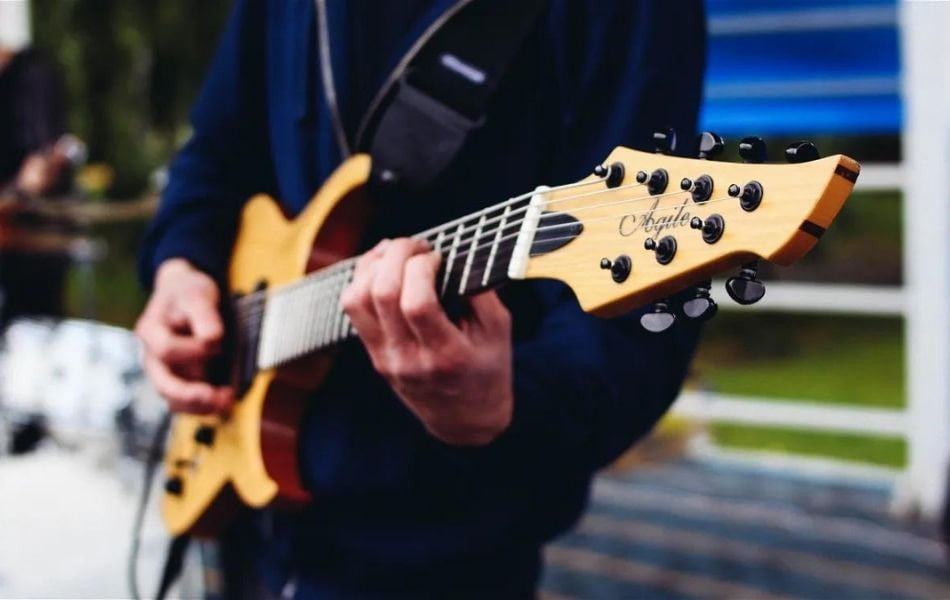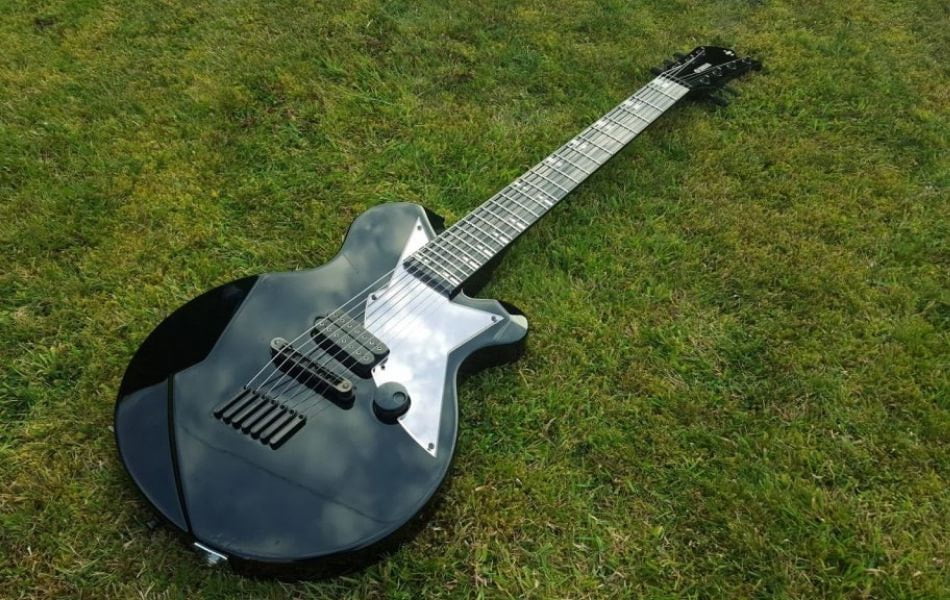The 7-string baritone guitar is a fascinating instrument that opens up a world of sonic possibilities. With its extended range and deep tonal characteristics, mastering the art of tuning this versatile instrument is a must for any guitarist. In this guide, we will demystify the process of a 7-string baritone guitar tuning.
Contents
What is 7-string baritone guitar tuning?
7-string baritone guitar tuning refers to a specific tuning configuration used on a guitar with seven strings and a longer scale length commonly associated with baritone guitars. The standard tuning 7-string baritone guitar is typically lower than that of a regular 6-string guitar, allowing for extended lower range and deeper tones.
The most common tuning for a seven-string baritone guitar is B-E-A-D-G-B-E. Starting from the lowest-pitched string to the highest, the strings are tuned to B, E, A, D, G, B, and E, respectively. The additional seventh string is typically a low B string, which provides the instrument with a deep and powerful low end.
However, it’s important to note that there are various alternate tunings used for 7-string baritone guitars, depending on the musician’s preferences and musical style. These alternate tunings can explore different tonal possibilities and accommodate various playing techniques and genres.
By utilizing the 7-string baritone guitar tuning, musicians can access a wider tonal range, explore lower registers, create complex chords and harmonies, and achieve a distinct and powerful sound that is well-suited for genres such as metal, progressive rock, and jazz fusion.

How to tune 7-string baritone guitar
The principle of 7-string baritone guitar tuning
The principle of stringing a 7-string baritone guitar is similar to that of a regular guitar. Here is how to string it:
Start with the lowest string (usually the 7th string), place it on the guitar’s neck, and adjust the tension to achieve the desired pitch.
Use a tool such as a string winder or the tuning pegs at the headstock to adjust the string tension. Turn the tuning pegs clockwise to increase tension and counterclockwise to decrease tension.
Proceed to string the remaining strings in ascending order. Ensure that each string is evenly and properly tensioned according to the desired pitch.
As you string each individual string, always check its pitch by playing it and comparing it to the target pitch. Adjust the tuning pegs until the string reaches the desired pitch.
After stringing all the strings, double-check the pitch of each string and make any necessary adjustments to ensure that the 7-string baritone guitar is properly strung and in tune.

Guide to tune 7-string baritone guitar
Applying the principles and progression mentioned above to your guitar, you would follow these steps to tune a 7-string baritone guitar:
Start with the lowest string (7th string) and tune it to the note B.
- Move on to the 6th string and tune it to the note E.
- Proceed to the 5th string and tune it to the note A.
- Tune the 4th string to the note D.
- Tune the 3rd string to the note G.
- Tune the 2nd string to the note B.
- Finally, tune the 1st string to the note E.
Alternative 7-string baritone guitar tuning
Alternate tunings offer a wonderful opportunity to explore the possibilities of a 7-string guitar. Here is a chart of some common alternate tunings that 7-string guitar players can experiment with:
| 7-String Guitar Tuning | String 7 to 1 (In Order) |
| Standard | B-E-A-D-G-B-E |
| Drop A | A-E-A-D-G-B-E |
| DADGAD variation | Bb-F-Bb-Eb-F-Bb-Eb |
| B Standard 4ths | B-E-A-D-G-C-F |
| Devin Townsend Variation | G-C-G-C-G-C-E |
| Periphery’s “Racecar” tuning | Bb-Db-Ab-Db-Gb-Bb-Eb |
In conclusion, the world of 7-string baritone guitar tuning may initially appear daunting, but with a bit of guidance and experimentation, it can be demystified. By understanding the principles and techniques involved, you can confidently navigate the intricacies of tuning your instrument.
